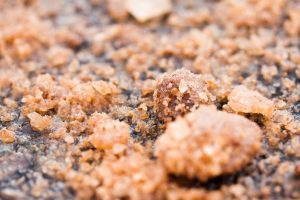6 Methods of Snow Fighting Your Roads Department Needs
Methods of Snow Fighting to Keep Roads Safe
Methods of snow-fighting vary by region, but the goal is the same, to keep the roads safe. Whether it’s the surprise spring storm, the first week of fall snowstorm, or a mid-winter blizzard, busy road crews are always out making sure that the roads are safe. Often all through the night and all day, they are working in freezing temperatures to fight snow accumulation and icy roads. From large state department of transportation crews to small-town teams, the methods of snow-fighting don’t differ much, but the budgets and equipment do. Even when budgets are tight, the public’s safety cannot be compromised. Here are six methods of snow-fighting and deicing.
- Plowing
Under the right conditions, only a snowplow may be needed. But if a roads department is only running a snowplow and not using any other products to help combat icy roads and slippery bridges, it may not be addressing the conditions suitable for public safety or even saving money in the long run. Fuel expenses, driver hours, and equipment wear, and tear can add up quickly. Planning the routes and publishing them for the public on the city, county, or state websites will help reduce the flood of phone and email questions with each storm. - Sands
Some DOT’s and road crews use sand to assist with traction when the hills and roads get slick. While it does provide grip, plain sand does not provide any snow or ice melting benefits. And the post-storm clean-up with street sweepers can really add to the winter road budget. Local merchants are also less than pleased when they have to get out and clean up their sidewalks before the sand and dust gets tracked into their stores. For more efficient sand distribution, stockpiles can be treated with products like SOS to reduce the bounce and scatter and ensure less wasted product. - Cinders
Cinders are sometimes used as an alternative to salt for ice and snow control. Ice control cinders are dark in color. It can be used alone or mixed in with white salt. Cinders require substantial after storm clean up. - White Salt
Primarily used for cheap ice melting, white road salt has been used for over 79 years to melt snow and ice. But untrained drivers, inefficient distribution methods and after storm clean-up costs can eliminate the perceived budget savings. Remember, white salt is not a natural product. It has been processed, bleached and other chemicals have been added to it. - Liquids and Liquid Product Enhancers
Liquid anti-icing or deicing can be very effective for extreme temperatures. Used alone or in conjunction with other products, they can work down to -5 degrees and increase the effectiveness of our other ice melts. Liquid Product Enhancers help supercharge existing stockpiles, sand, salt, cinder, and salt brine supplies. - Granular Ice Melts
ice slicer granular snow fighting Slicer is our most popular granular product. It is an environmentally friendly, low-corrosion de-icing product used to break the bond of snow and ice from roadways, walkways, driveways, and parking lots. Ice Slicer’s unique blend of natural chlorides melts snow and ice effectively to 0° F, resulting in safer roads at lower temperatures.


When the big snowstorms and freezing temperatures hit, be sure that you’re prepared with the most effective methods of snow-fighting your roads department needs to keep the roads safe.
Call us at (877) 718-3878 to learn more.
Desert Mountain Corporation – Keeping Roads Safe Since 1990
